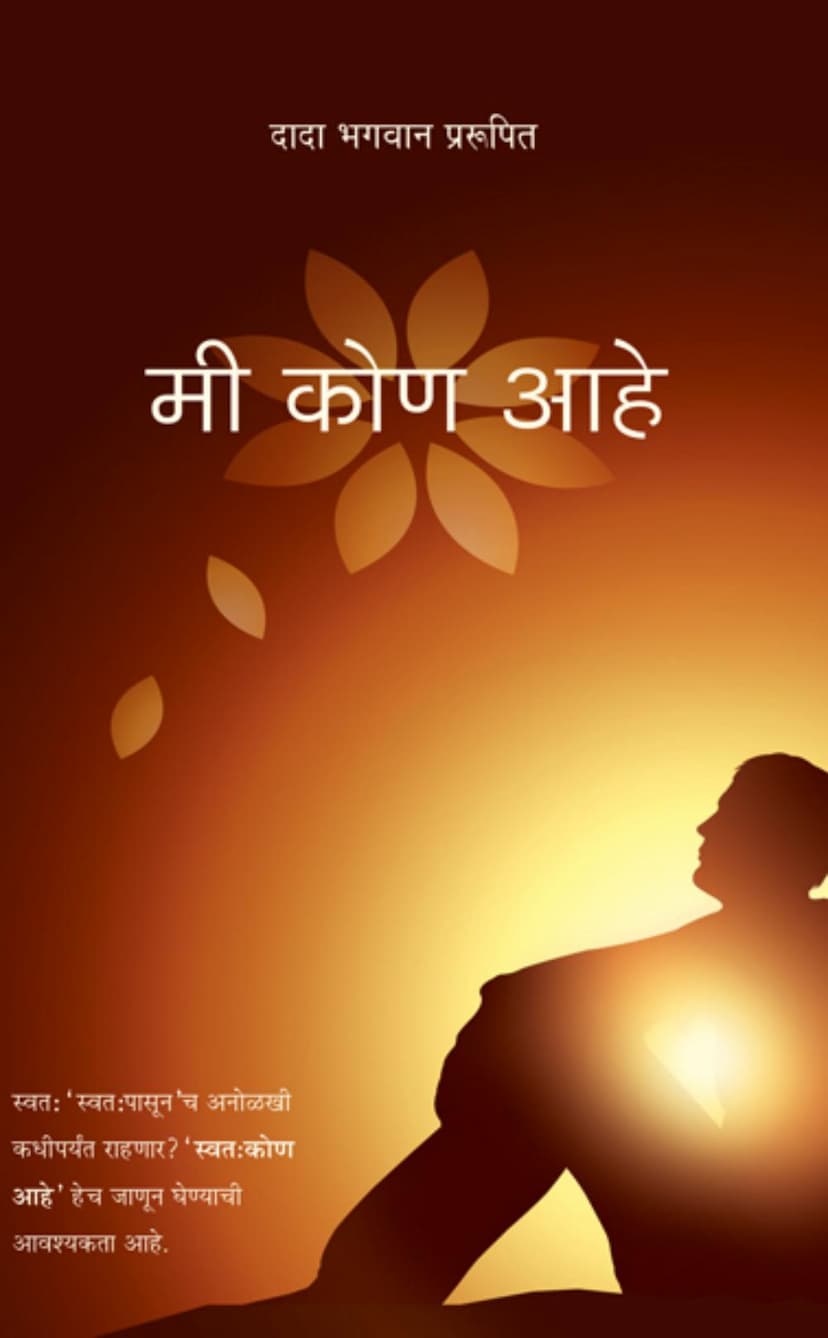Mi Kon Mahe
Added to library: September 2, 2025

Summary
Here's a comprehensive summary of the Jain text "Mi Kon Mahe" (Who Am I?) by Dada Bhagwan, based on the provided pages:
Book Title: Mi Kon Mahe (मी कोण आहे) - "Who Am I?" Author: Dada Bhagwan (दादा भगवान) Publisher: Dada Bhagwan Aradhana Trust (दादा भगवान आराधना ट्रस्ट)
Core Theme:
The central theme of this book revolves around self-realization, specifically answering the fundamental question "Who am I?". Dada Bhagwan guides the reader to understand their true nature, which is the pure Soul (Shuddhatma), distinct from the temporary physical body, name, relationships, and worldly possessions.
Key Concepts and Teachings:
-
The Distinction Between the True Self and the Ego:
- The book begins by posing the question of identity. Dada Bhagwan highlights that our names, like "Chandu Lal," are merely labels and not our true selves.
- He explains that the ego ("I") is a misplacement of the true self. We wrongly identify with our name, profession, relationships, and even our physical body, leading to suffering when these external aspects are affected.
- The core of the teaching is to differentiate the "I" from the "My" (possessions, relationships, body parts). By separating "My house," "My wife," "My body" from the true "I," one can begin to approach the Self.
-
The Nature of Beliefs (Belief, Wrong-Right):
- Dada Bhagwan identifies that our suffering stems from "wrong beliefs" (wrong identifications) that are deeply ingrained in us from countless lifetimes. Examples include: "I am Chandu Lal," "I am a husband," "I am a lawyer," "I am fair-skinned," "I am 45 years old."
- These beliefs are not based on reality but on societal conditioning and self-imposed assumptions.
-
The Role of the "Gnani Purush" (The Knower of the Self):
- The book emphasizes that true understanding of the Self can only be attained through the grace and guidance of a "Gnani Purush" (a Self-realized being).
- Dada Bhagwan himself is presented as such a Gnani Purush, who attained the Self in a unique, "A-kram" (non-sequential) manner. He then explains that this knowledge can be transferred to others in a short period (e.g., two hours) through a process called Gnan Vidhi (ज्ञानविधि).
-
The "A-kram" Path (Un-sequential Path):
- Dada Bhagwan contrasts the traditional "kramik" (sequential, step-by-step) path to liberation with his "A-kram" path.
- The A-kram path is described as a "lift" or a "shortcut" to self-realization, allowing one to attain the Self in this lifetime, even while living a worldly life with all its responsibilities. It bypasses the arduous, step-by-step progression of traditional paths.
-
The True Creator and the Nature of the World:
- Dada Bhagwan challenges the conventional belief that God is the creator of the world. He states that God is not the creator but resides within every living being.
- The world is explained as a natural phenomenon governed by scientific circumstantial evidence and a divine "arrangement" or "system" ("Vyavasthit Shakti"). The concept of a personal creator who intervenes is refuted.
- He states that attributing the world's workings to God is a fallacy, and if God were the creator, then liberation (moksha) would not be possible.
-
The Nature of Karma and Liberation:
- The book clarifies that our actions bind us to karma. However, the suffering arises from the belief of being the doer ("karta").
- When one realizes they are not the doer but a mere witness (a property of the Soul), the karmic bondage dissolves.
- The goal is moksha (मोक्ष), which is liberation from the cycle of birth and death and the attainment of eternal bliss and peace. It is described not as a place but as a state of being.
-
The Importance of "Agya" (Commands/Guidelines):
- After receiving Self-knowledge through the Gnani, following the Gnani's five commands (पांच आज्ञा) is crucial for protecting the Self-realization and preventing new karmic attachments.
- These commands act as a protective fence, safeguarding the attained spiritual state. Even if one slips, practicing pratikraman (प्रतिक्रमण - confession and repentance) for forgetting the commands is advised.
-
The Difference Between Saints and Gnani Purush:
- Saints (sant) guide people away from wrongdoings and towards good deeds. They show the path and walk it themselves.
- Gnani Purush (ज्ञानी पुरुष) provide liberation and help one realize their true Self. They are the destination, not just guides. A saint leads to the Gnani.
-
The Significance of "Dada Bhagwan" (The Self as manifested):
- Dada Bhagwan clarifies that the "Dada Bhagwan" referred to is the manifested Pure Soul within him, the "Lord of the fourteen worlds." He, as A.M. Patel, is the "Gnani Purush" who has realized this inner Divinity. He bows to his own inner "Dada Bhagwan."
- This inner Divinity is present in all beings but is unmanifested in most.
-
The Practicality of the Teachings:
- The book emphasizes that these profound spiritual truths are practical and can be applied in daily life. One can attain liberation while living in the world, fulfilling all their worldly duties.
- The "Gnan Vidhi" is presented as the practical method to attain this realization quickly.
Overall Message:
"Mi Kon Mahe" is a guide to discover one's true, unchanging Self, the Pure Soul. It teaches that by understanding the ego, differentiating between "I" and "My," and receiving the grace of a Gnani Purush, one can achieve liberation from suffering and attain eternal peace and bliss, even while living a worldly life. The "A-kram" path offers a direct and effective way to achieve this within one lifetime. The book encourages living in accordance with the divine laws and the guidance of the Gnani.